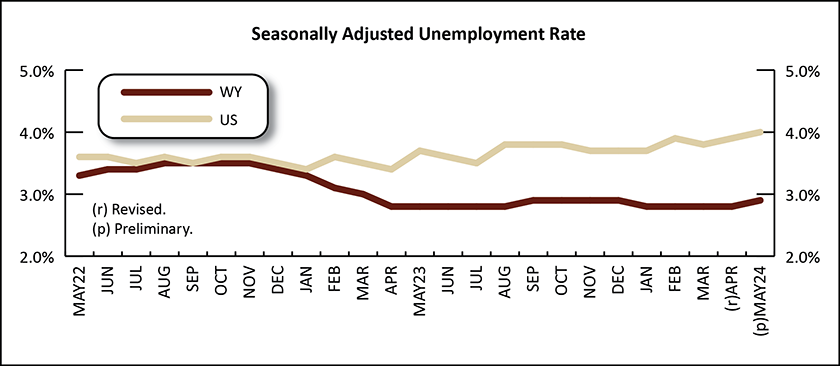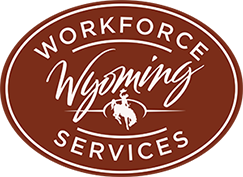Wyoming Labor Force Trends
July 2024 | Volume 61, No. 7
Click Here for PDF
Return to Table of Contents
Wyoming Unemployment Rises Slightly to 2.9% in May 2024
by: David Bullard, Senior Economist
The Research & Planning section of the Wyoming Department of Workforce Services reported that the state’s seasonally adjusted1 unemployment rate rose slightly from 2.8% in April to 2.9% in May. Wyoming's unemployment rate remained within the narrow range of 2.8% to 3.0% for 15 months. The U.S. unemployment rate of 4.0% in May was much higher than Wyoming’s rate.
From April to May, most unemployment rates increased slightly. This reflects a modest departure from the normal seasonal pattern for May. The largest increases were found in Carbon (up from 2.8% to 3.1%) and Sweetwater (up from 3.0% to 3.3%) counties, while unemployment fell in Washakie (down from 3.2% to 3.0%), Sublette (down from 3.6% to 3.4%), Park (down from 2.9% to 2.7%), Niobrara (down from 2.3% to 2.1%), and Lincoln (down from 3.0% to 2.8%) counties.
From May 2023 to May 2024, unemployment rates rose in 19 counties, remained unchanged in three counties, and fell slightly in Teton County (down from 2.7% to 2.6%). The largest increases occurred in Big Horn (up from 2.8% to 3.4%) and Sublette (up from 2.8% to 3.4%) counties.
The highest unemployment rates in May were found in Big Horn, Sublette, and Uinta counties (each at 3.4%). The lowest unemployment rate was reported in Niobrara County at 2.1%. It was followed by Weston and Crook counties (each at 2.3%).
Current Employment Statistics (CES) estimates show that total nonfarm employment in Wyoming (not seasonally adjusted and measured by place of work) rose from 292,300 in May 2023 to 295,200 in May 2024, an increase of 2,900 jobs (1.0%).
R&P's most recent monthly news release is available at https://doe.state.wy.us/LMI/news.htm.



 Hire Wyo
Hire Wyo